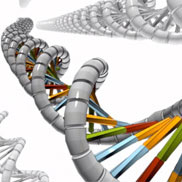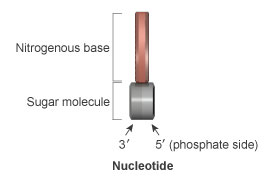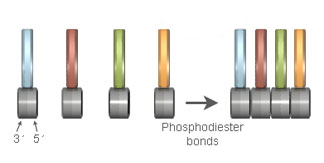
DNA is found in nearly all living cells. However, its exact location within a cell depends on whether that cell possesses a special membrane-bound organelle called a nucleus. Organisms composed of cells that contain nuclei are classified as eukaryotes, whereas organisms composed of cells that lack nuclei are classified as prokaryotes. In eukaryotes, DNA is housed within the nucleus, but in prokaryotes, DNA is located directly within the cellular cytoplasm, as there is no nucleus available.
But what, exactly, is DNA? In short, DNA is a complex molecule that consists of many components, a portion of which are passed from parent organisms to their offspring during the process of reproduction. Although each organism's DNA is unique, all DNA is composed of the same nitrogen-based molecules. So how does DNA differ from organism to organism? It is simply the order in which these smaller molecules are arranged that differs among individuals. In turn, this pattern of arrangement ultimately determines each organism's unique characteristics, thanks to another set of molecules that "read" the pattern and stimulate the chemical and physical processes it calls for.
What components make up DNA?

Figure 1: A single nucleotide contains a nitrogenous base (red), a deoxyribose sugar molecule (gray), and a phosphate group attached to the 5' side of the sugar (indicated by light gray). Opposite to the 5' side of the sugar molecule is the 3' side (dark gray), which has a free hydroxyl group attached (not shown).

Figure 2: The four nitrogenous bases that compose DNA nucleotides are shown in bright colors: adenine (A, green), thymine (T, red), cytosine (C, orange), and guanine (G, blue).
Although nucleotides derive their names from the nitrogenous bases they contain, they owe much of their structure and bonding capabilities to their deoxyribose molecule. The central portion of this molecule contains five carbon atoms arranged in the shape of a ring, and each carbon in the ring is referred to by a number followed by the prime symbol ('). Of these carbons, the 5' carbon atom is particularly notable, because it is the site at which the phosphate group is attached to the nucleotide. Appropriately, the area surrounding this carbon atom is known as the 5' end of the nucleotide. Opposite the 5' carbon, on the other side of the deoxyribose ring, is the 3' carbon, which is not attached to a phosphate group. This portion of the nucleotide is typically referred to as the 3' end (Figure 1). When nucleotides join together in a series, they form a structure known as a polynucleotide. At each point of juncture within a polynucleotide, the 5' end of one nucleotide attaches to the 3' end of the adjacent nucleotide through a connection called a phosphodiester bond (Figure 3). It is this alternating sugar-phosphate arrangement that forms the "backbone" of a DNA molecule.

















